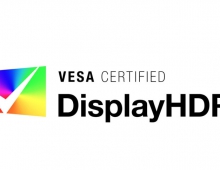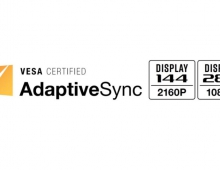
VESA Approves DisplayPort Version 1
The Video Electronics Standards Association (VESA) has approved version 1.1 of the DisplayPort interface standard for use in new designs of flat panel displays, projectors, PCs and CE devices.
DisplayPort 1.1 gives manufacturers of LCD panels, monitors, graphics cards, PC chipsets, projectors, peripherals, components, and consumer electronics a next generation digital interface that is designed to replace LVDS, DVI, and eventually VGA. DisplayPort provides the ability to connect to both internal and external displays with a common digital interface. This common interface capability means that DisplayPort can carry pixels directly from any display source to any LCD panel, simplifying the design complexity that is present today. As presented at CES 2007, a DisplayPort Interoperability Guideline is nearing completion that recommends best practices for providing DVI and HDMI connectivity via the DisplayPort connector and simple cable adapters.
DisplayPort 1.1 adds support for High Bandwidth Digital Content Protection (HDCP) version 1.3. HDCP support enables viewing of protected content from Blu-ray and HD-DVD optical media over DisplayPort 1.1 connections.
DisplayPort 1.1 provides low voltage and low power operation, claimed to enable improved interoperability and reduced EMI through its embedded clock architecture. Advantages over DVI and VGA include a small USB-sized connector with available latching, two-way display connectivity, optional audio support, higher performance than dual link DVI at 10.8 Gigabits per second, and a micro-packet architecture that enables new display features.
Major DisplayPort supporters include AMD, Intel, HP, Nvidia, Lenovo, Samsung, and Philips.
DisplayPort 1.1 adds support for High Bandwidth Digital Content Protection (HDCP) version 1.3. HDCP support enables viewing of protected content from Blu-ray and HD-DVD optical media over DisplayPort 1.1 connections.
DisplayPort 1.1 provides low voltage and low power operation, claimed to enable improved interoperability and reduced EMI through its embedded clock architecture. Advantages over DVI and VGA include a small USB-sized connector with available latching, two-way display connectivity, optional audio support, higher performance than dual link DVI at 10.8 Gigabits per second, and a micro-packet architecture that enables new display features.
Major DisplayPort supporters include AMD, Intel, HP, Nvidia, Lenovo, Samsung, and Philips.





















